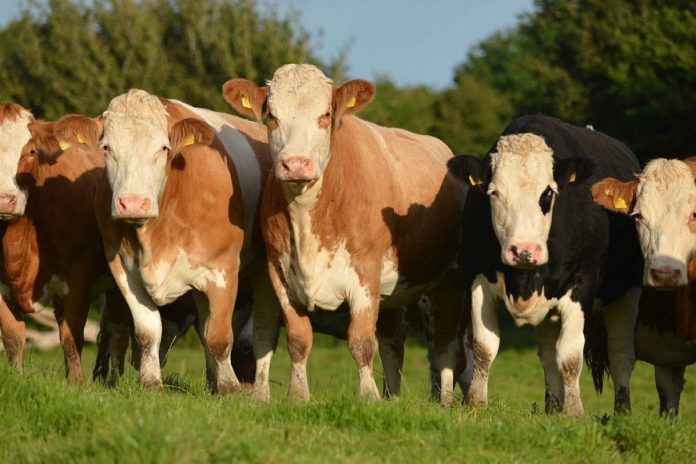Smaller cows can produce heavier weanlings, according to an analysis of the 2019 BEEP (Beef Environmental Efficiency Pilot) scheme.
Approximately 780,000 cow and calf weights were recorded in the ICBF database, according to the federation.
The data showed that as the replacement index increases, cow liveweight decreases and calf weaning weight increases.
Commenting on the results of Teagasc’s analysis, an ICBF spokesperson highlighted that replacement index is delivering on key profit traits on Irish suckler farms.
They pointed out that continued comprehensive data recording and genotyping will “accelerate” the rate of genetic gain in suckler herds, which, in turn, will drive on-farm performance and the associated economic benefits.
Table 1 [data source ICBF] gives a detailed breakdown of the performance of cows from 1-5 stars on the replacement index:
| Replacement index star rating | No. cows | Average replacement index | Average cow weight (kg) | Calf 200-day weight (kg) | Cow/calf weaning % |
| 5 | 76,171 | 127 | 628 | 300 | 47.8 |
| 4 | 52,827 | 93 | 633 | 297 | 46.9 |
| 3 | 40,867 | 76 | 637 | 296 | 46.4 |
| 2 | 36,532 | 58 | 642 | 294 | 45.8 |
| 1 | 31,939 | 28 | 652 | 292 | 44.8 |
| Difference 1-5 | 99 | -24 | 8 | 3 |
“Looking at the differences between the 5-star and 1-star groups, we can see that 5-star cows were 24kg lighter and produced calves that were 8kg heavier at weaning, resulting in a cow/calf weaning % which is 3% higher.”
Economic benefits of having higher replacement index cows
“If we again compare the 5-star and 1-star groups, we can see significant economic benefits to having higher replacement index cows.” the spokesperson added.
Mature animals will generally consume 2% of their own body weight in dry matter, spokesperson added.
Maintaining the extra 24kg of cow liveweight of an average 1-star cow will require 0.5 kg extra dry matter per day in feed, the spokesperson added.
Over the course of a year, this equates to 182.5kg of extra dry matter. Grazed grass costs approximately 8 cents per kg of dry matter and grass silage costs approximately 17 cents.
“If a suckler cow spends 9 months of the year at grass (270 days) and the remaining 3 months (95 days) indoors eating silage, this equates to 135 extra kg of grass dry matter and 47.5 extra kg of silage dry matter.”
This will result in an extra cost of €10.80 in grass (135 x €0.08) and €8.10 in silage (47.5 x €0.17) giving a total of €18.90.
“If you take the whole suckler sector and look at the potential impact on feed costs on 900,000 suckler cows, then €18.90 at a cow-level grows to €17 million across the national herd.”
8kg extra weaning weight will also generate more revenue. “Even at a modest weanling price of €2/kg, this equates to €16 per cow and over a 20 cow herd, an extra €320.”
“Again, when the impact is looked at from an industry level across 900k cows the figure comes to €14.5 million.”





